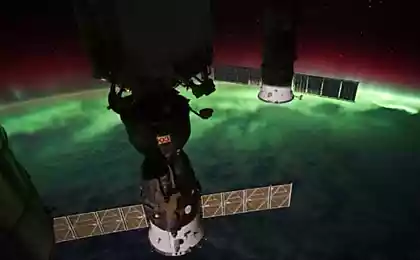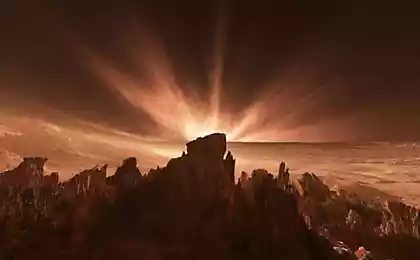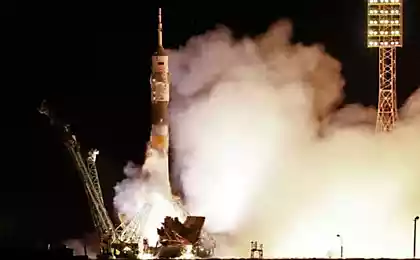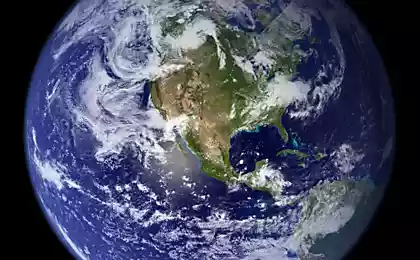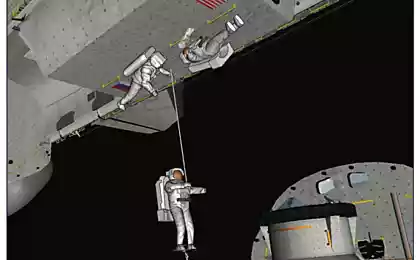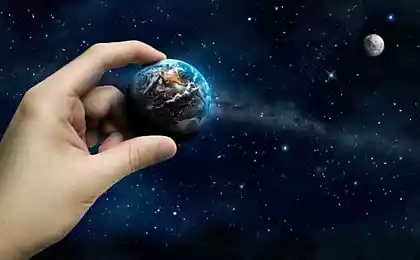1297
Training Center NASA (32 photos)
Mission Control Center was opened in 1961, occupying an area of about 650 hectares. The complex was created to provide a training base of astronauts, the creation of scientific and repair centers and Control Mission Control. Initially, the center did not have a name, and only in 1973, he officially received the name of Lyndon Johnson.
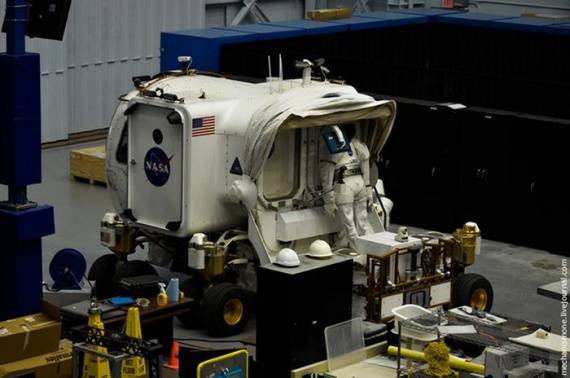
This is the closed area inside the center to get here, you need to sit on the car train, the trip is available to everyone. Since This closed area, at the entrance you will have to take a picture, and then you never know.
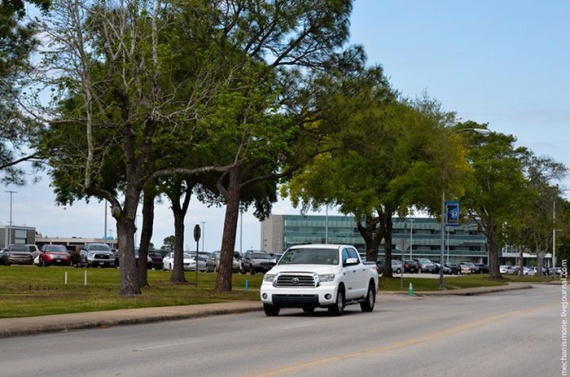
The first thing that catches the eye on the inside area - plenty of barrels of nitrogen. For all hangs a reminder that its temperature is -195 C, if suddenly someone would close at depressurization.
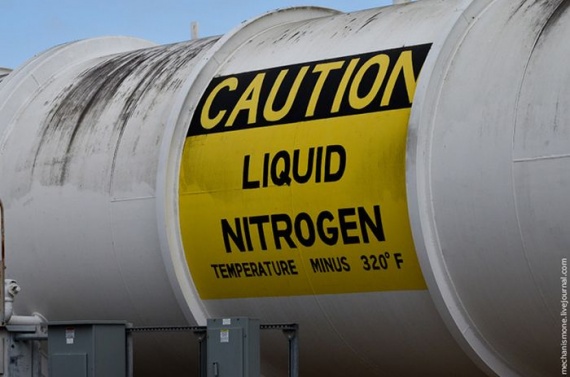
The first stop of the train - a training center, which contains various modules and part of the space stations. For tourists on the third floor of the gallery is made, which can be viewed on training and exposure. Although tourists are hard at work at the bottom.

Since space essentially fly only the United States and Russia, the exhibition features both American and Russian modules.
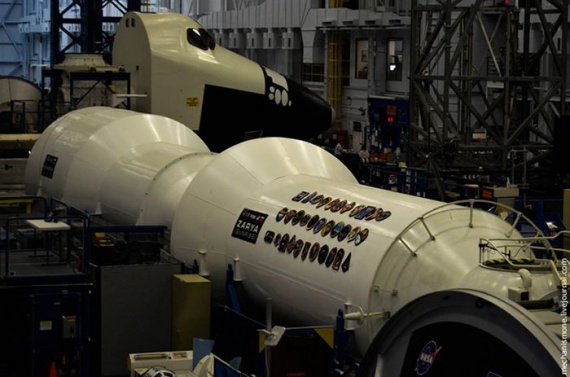
Block Zarya.
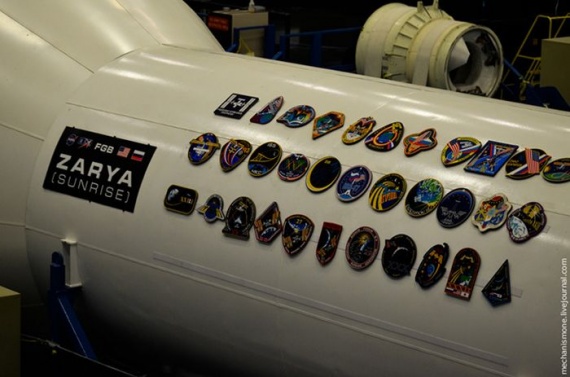
American Harmony module.
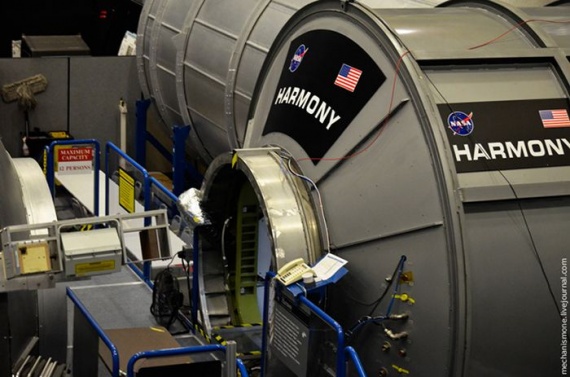
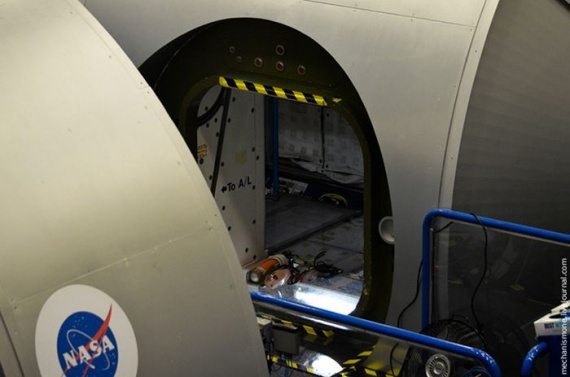
This multi-purpose reusable module Italian-American production. The interior is sealed, the volume of 70 cubic meters. meters. The module was designed for the transportation of goods to and from the International Space Station. Today, this module is located at the station permanently.

Small layout of the ISS on the wall.
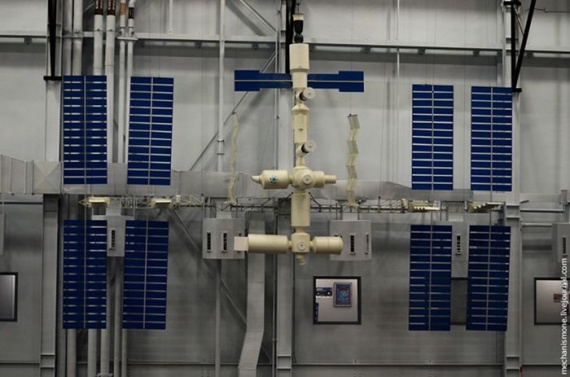
Some device.
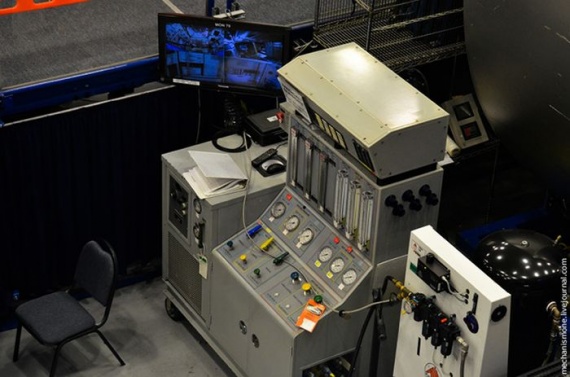
In some places, small work a mess.
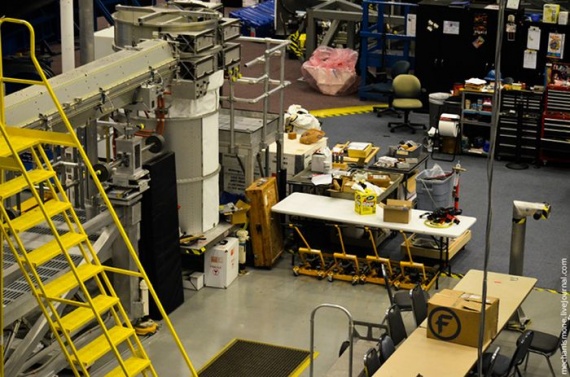
Tourist nobody pays any attention.
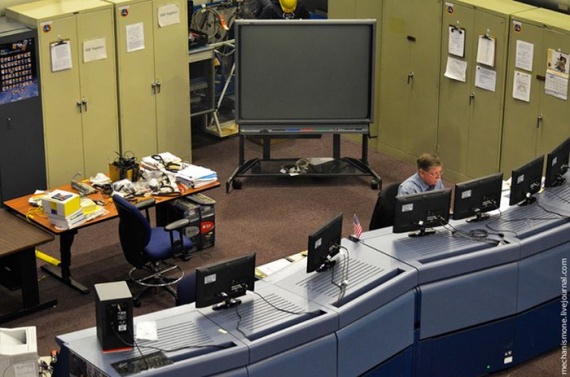
Russian capsule.
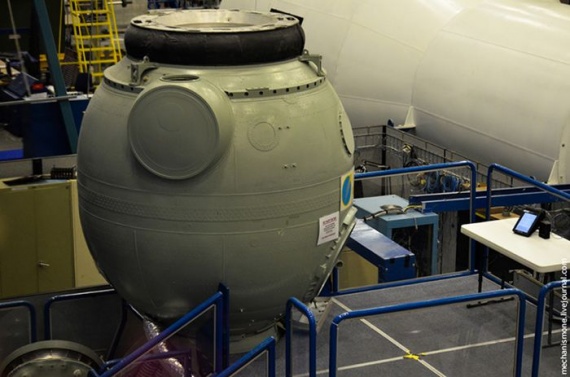
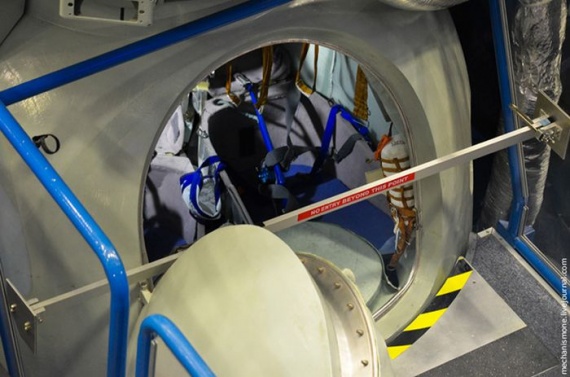
American capsule. Incidentally, an interesting fact, the Russian capsule always sit on the ground, and the US is always in the Pacific Ocean. I wonder why?
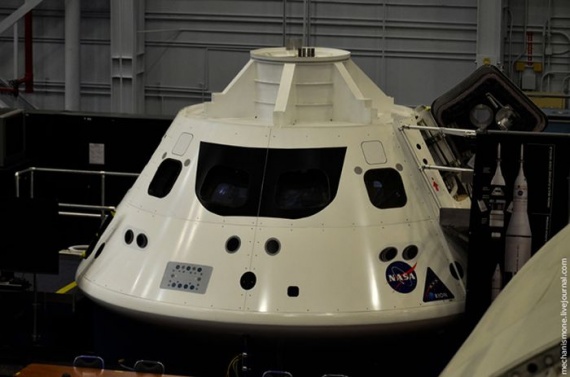
The suits. To put on a suit and sealed, it takes about two hours and the help of two people. In the next room the astronauts train dress and undress each other.
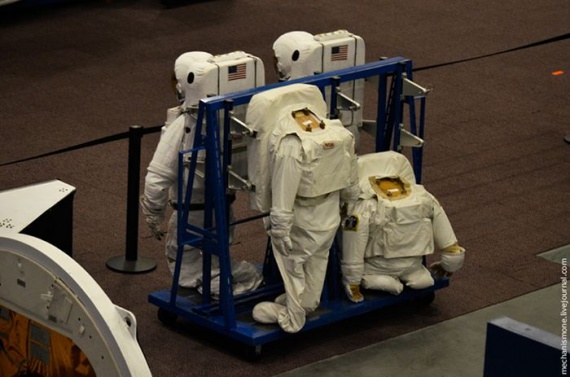
This modular "hand-grip-tap." This arm was mounted inside the cargo department in the shuttle, today it is still there as part of the space shuttle. Soon it will be removed. Earlier in the layout of the shuttle was full, it was removed recently, as unnecessary.
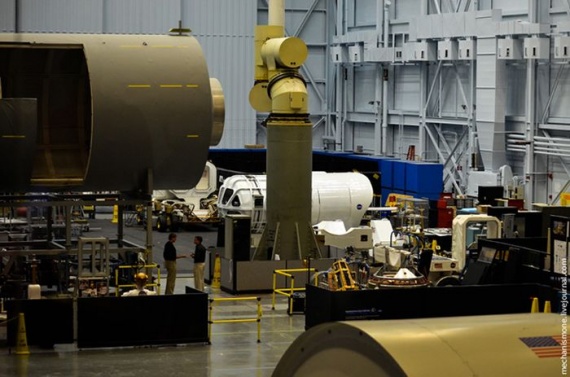
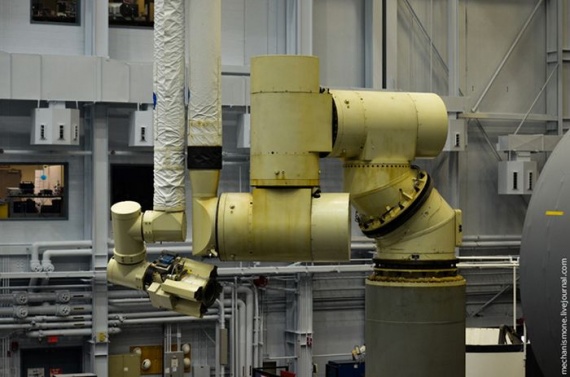
Nearby is assembling some obscure unit.
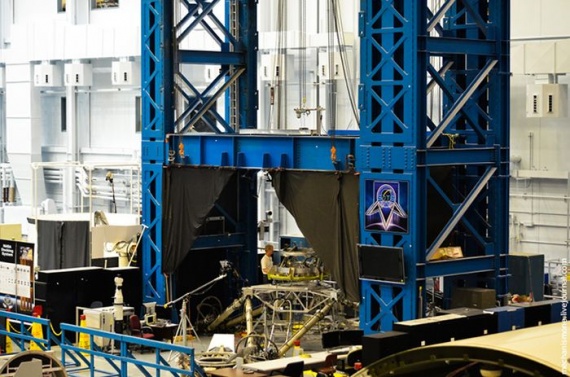

The old machine-rover, actually this has already been on the moon.
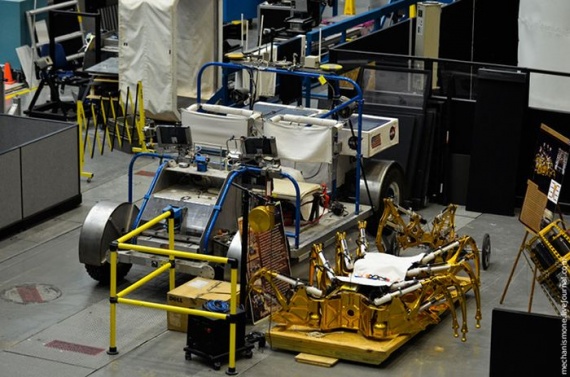
Another version of the robot.
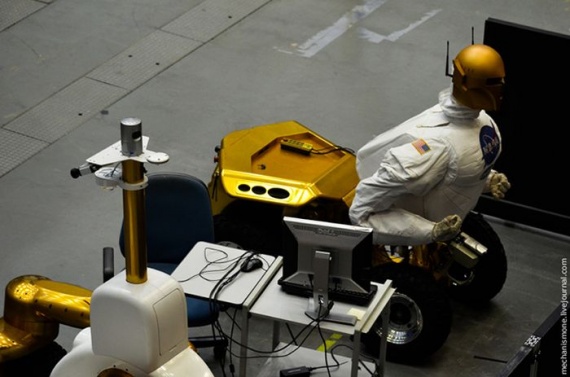
Modern rover. He has participated in numerous expeditions and tests in Arizona. Lunokhod consists of a sealed dock cabin, which can be connected to the main base (large door side) buffer booths spacewalk (two doors in the back), the entire suspension on Lunokhod independent wheels can rotate 360 degrees on an individual basis, that enables moon rovers to maneuver among the obstacles, he can move at a speed of 16 km / h, autonomous rover - 14 days.
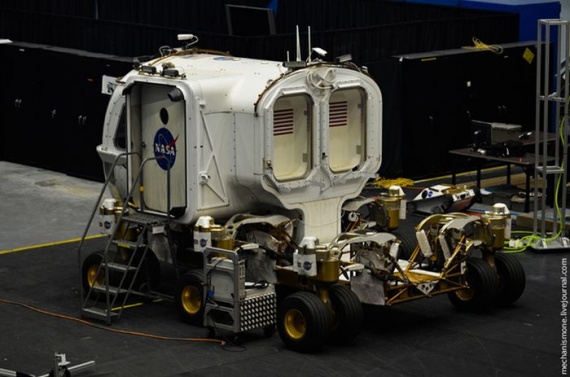
This fact itself is the "base" for the rover - space station. The idea is that the station will be sent to two lunar rover, which can freely be joined with the base when parking on the side. Inside the station, a living space with all the amenities. After trips to the moon the astronauts will return to base to refuel. While that is all tested.
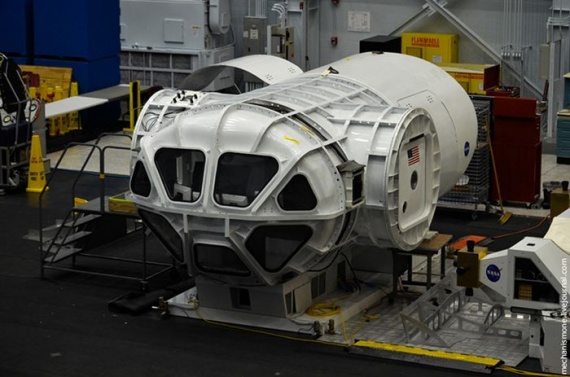
In addition to internal exposure, there is a small museum with a collection of rockets. Unfortunately, like the museum I did not have time, so just tell you one thing, the most important exhibits.

This Saturn 5 rocket. The biggest, longest and most severe in the history of space exploration rocket, built in 1960-1970 years. The rocket was built to fly to the moon. Its length is 111 meters, weight - 2965 tons, traction missiles - 34500 kN, load missiles - 142 tonnes for Earth orbit and 50 tons for the flight to the moon.

There were built 15 such missiles, it is one of the last two missiles that were not ispolzovany. Smaller prototypes were used for flights in the Earth's orbit, and then two more missiles were launched in the framework of projects of the Apollo 4 and 6, in 1967 and 1968. Both flight was unmanned and carried out to test missiles.
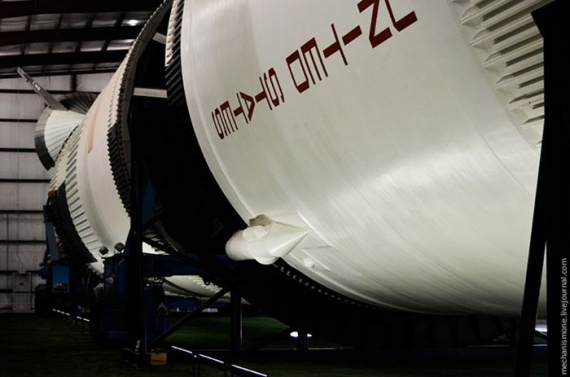
The next flight of Apollo 8 became already with the team that flew to the moon, but not the village. Then there were several flight, and finally sat down on the Apollo 11 moon and back. Then there was a failure on landing, due to technical problems, but not with the rocket and the Apollo with himself. The last missile of this type flew in 1973, moving on the Earth's orbit Skylab.
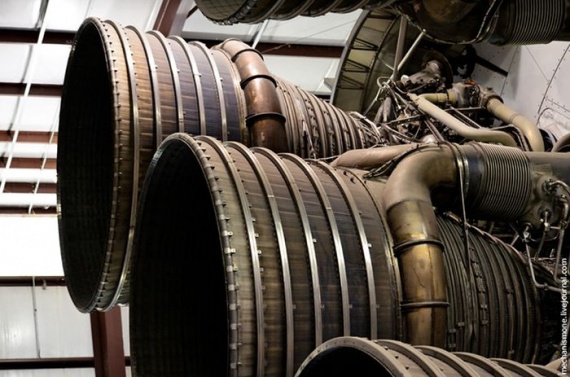
The missile consisted of three sections. The first section had the engine F1, this engine worked just 2.5 minutes, but in that time he managed to lift the rocket to 66 km and the speed of the rocket when it reaches 9700 km / h, the engine weight - 7100 kg.
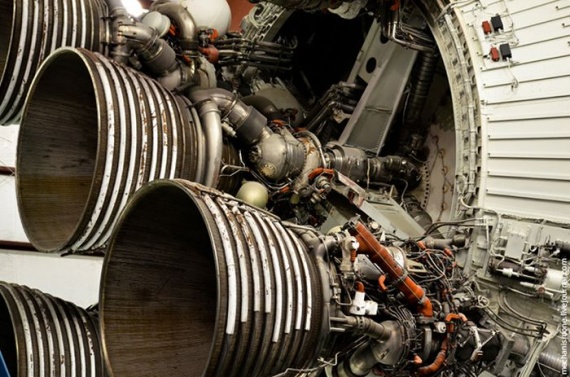
The inner container of oxygen-kerosene fuel.
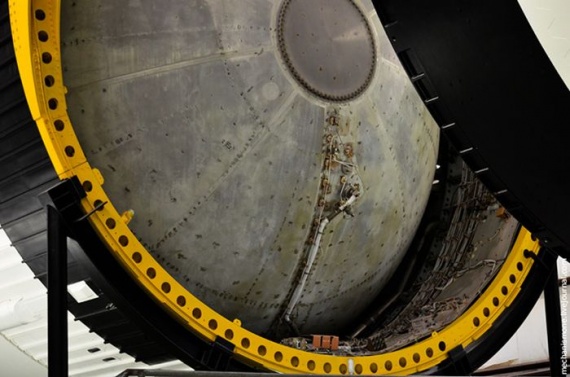
The engine of the third section.
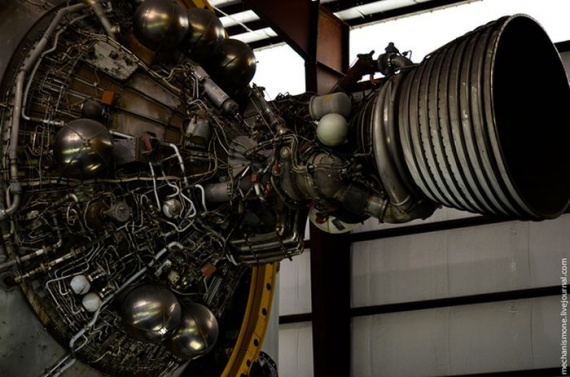
Source: mechanismone.livejournal.com

This is the closed area inside the center to get here, you need to sit on the car train, the trip is available to everyone. Since This closed area, at the entrance you will have to take a picture, and then you never know.

The first thing that catches the eye on the inside area - plenty of barrels of nitrogen. For all hangs a reminder that its temperature is -195 C, if suddenly someone would close at depressurization.

The first stop of the train - a training center, which contains various modules and part of the space stations. For tourists on the third floor of the gallery is made, which can be viewed on training and exposure. Although tourists are hard at work at the bottom.

Since space essentially fly only the United States and Russia, the exhibition features both American and Russian modules.

Block Zarya.

American Harmony module.


This multi-purpose reusable module Italian-American production. The interior is sealed, the volume of 70 cubic meters. meters. The module was designed for the transportation of goods to and from the International Space Station. Today, this module is located at the station permanently.

Small layout of the ISS on the wall.

Some device.

In some places, small work a mess.

Tourist nobody pays any attention.

Russian capsule.


American capsule. Incidentally, an interesting fact, the Russian capsule always sit on the ground, and the US is always in the Pacific Ocean. I wonder why?

The suits. To put on a suit and sealed, it takes about two hours and the help of two people. In the next room the astronauts train dress and undress each other.

This modular "hand-grip-tap." This arm was mounted inside the cargo department in the shuttle, today it is still there as part of the space shuttle. Soon it will be removed. Earlier in the layout of the shuttle was full, it was removed recently, as unnecessary.


Nearby is assembling some obscure unit.


The old machine-rover, actually this has already been on the moon.

Another version of the robot.

Modern rover. He has participated in numerous expeditions and tests in Arizona. Lunokhod consists of a sealed dock cabin, which can be connected to the main base (large door side) buffer booths spacewalk (two doors in the back), the entire suspension on Lunokhod independent wheels can rotate 360 degrees on an individual basis, that enables moon rovers to maneuver among the obstacles, he can move at a speed of 16 km / h, autonomous rover - 14 days.

This fact itself is the "base" for the rover - space station. The idea is that the station will be sent to two lunar rover, which can freely be joined with the base when parking on the side. Inside the station, a living space with all the amenities. After trips to the moon the astronauts will return to base to refuel. While that is all tested.

In addition to internal exposure, there is a small museum with a collection of rockets. Unfortunately, like the museum I did not have time, so just tell you one thing, the most important exhibits.

This Saturn 5 rocket. The biggest, longest and most severe in the history of space exploration rocket, built in 1960-1970 years. The rocket was built to fly to the moon. Its length is 111 meters, weight - 2965 tons, traction missiles - 34500 kN, load missiles - 142 tonnes for Earth orbit and 50 tons for the flight to the moon.

There were built 15 such missiles, it is one of the last two missiles that were not ispolzovany. Smaller prototypes were used for flights in the Earth's orbit, and then two more missiles were launched in the framework of projects of the Apollo 4 and 6, in 1967 and 1968. Both flight was unmanned and carried out to test missiles.

The next flight of Apollo 8 became already with the team that flew to the moon, but not the village. Then there were several flight, and finally sat down on the Apollo 11 moon and back. Then there was a failure on landing, due to technical problems, but not with the rocket and the Apollo with himself. The last missile of this type flew in 1973, moving on the Earth's orbit Skylab.

The missile consisted of three sections. The first section had the engine F1, this engine worked just 2.5 minutes, but in that time he managed to lift the rocket to 66 km and the speed of the rocket when it reaches 9700 km / h, the engine weight - 7100 kg.

The inner container of oxygen-kerosene fuel.

The engine of the third section.

Source: mechanismone.livejournal.com













